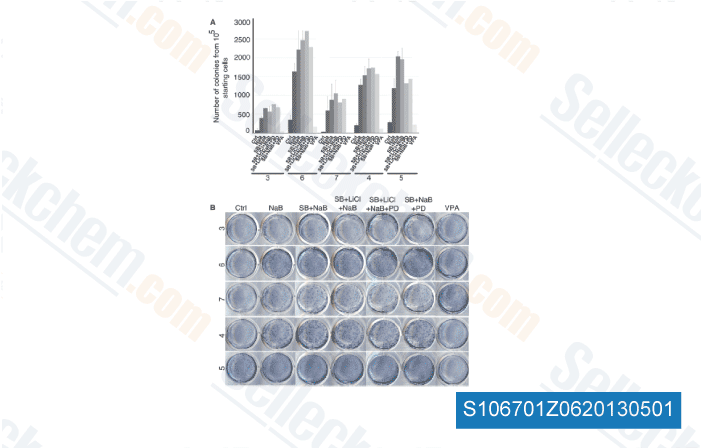Three genes, bHLH, AG1 and ZF, have been identified as being overexpressed in ripe fruit in RNA seq information evaluation and hence have been designated for fur ther confirmation. Similarly, 5 genes, ERF3 Q6RH27 and MYB/At3g06490, had been recognized as staying overexpressed in AZ in RNA seq data evaluation and were assigned to further confirmation. The qRT PCR evaluation confirmed the enrichment bHLH, AG1 and ZF genes in ripe fruit plus the enrich ment of ERF3, MYBPA1, MYB108, NAC and MYB/ At3g06490 genes in the olive AZ. Notably, the ex pression of ERF3, MYBPA1, MYB108, NAC and MYB/ At3g06490 had been not detected in fruit, as well as expression of bHLH, AG1 and ZF had been not detected in AZ. Thus, the qRT PCR expression re sults correlated using the RNA seq expression information for your genes examined.
Furthermore, we made use of qRT PCR evaluation for that expression profiles of eight TFs in olive fruit and AZ through fruit ripening and abscission. The expression of bHLH and ZF greater three fold and one fold in olive fruit, respectively, during rip ening, even though AG1 expression decreased selleck chemicals one. six fold while in ripening, implying that these genes are in volved in ripening events. Alternatively, transcripts of MYBPA1, MYB108, NAC and MYB/At3g06490 accumu lated for the duration of abscission in olive AZ, whereas the expres sion of ERF3 was decreased in olive AZ during abscission. Hence, the expression pattern of some genes in olive fruit or AZ, carried out by qRT PCR, are proven to represent the transcriptome related to fruit ripening or the transcriptome linked to the activation of abscission.
Conclusion We carried out 454 transcriptome sequencing Sumanirole and de novo assembly for two tissues, ripe fruit and AZ, of Olea europaea. Like a end result, we describe transcriptomic vary ences among the ripe fruit and this AZ happening at final stage of ripening in olive as well as prospective new genes produced. Improvements in gene transcripts had been accompanied by alterations in expression of TFs, specially people while in the TFs MADS box, ZF, homeobox domain proteins, bHLH, and bZIP families, that putatively may set off the cross speak concerning fruit and AZ. Our effects indicate that genes encoding members of Aux/IAA, C2H2L, and CAMTA households have been preferentially transcribed in ripe fruit. By contrast, TF genes of the HSF, GRAS, GAGA binding protein, EIN3/EIL, E2F/DP, CCAAT binding protein, and WRKY households have been preferentially transcribed in AZ.
In addition, by quantitative actual time PCR examination, we confirmed the mRNA Seq results for eight TF genes. This outcome implies the research of people TFs related with all the expression pattern observed in ripe fruit could  open leading biological pathways governing gene expression regu lation in ripe fruit. These information provide the initial com prehensive and comparative molecular knowledge for knowing the expression differences in these tissues.
open leading biological pathways governing gene expression regu lation in ripe fruit. These information provide the initial com prehensive and comparative molecular knowledge for knowing the expression differences in these tissues.
FAK signal
FAK is activated by focal adhesion complex
